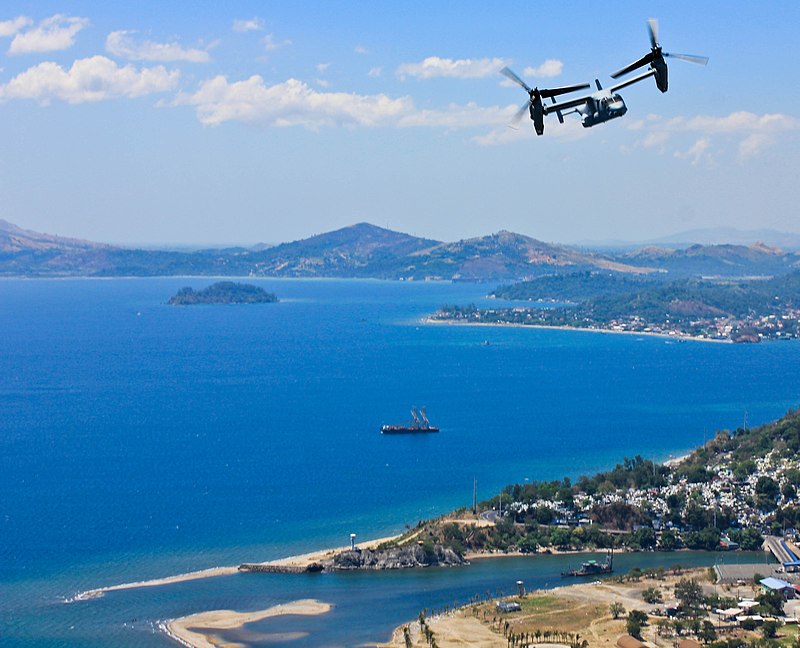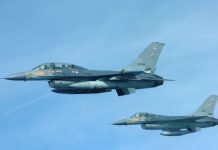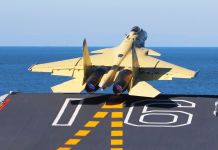China plans to achieve its complete modernization of both strategic nuclear and conventional air, land, and sea military forces to conduct a full range of warfare across all domains against any “strong enemy,” the annual US Defense Department to Congress on Beijing’s military capabilities, said.
“The PLA [People’s Liberation Army] seeks to modernize its capabilities and improve its proficiencies across all warfare domains so that, as a joint force, it can conduct the full range of land, air, and maritime as well as nuclear, space, counter space, electronic warfare (EW) and cyberspace operations, the report, dubbed “Annual Report to Congress: Military and Security Developments Involving the People’s Republic of China.”
The evolving capabilities of China’s armed forces continue to strengthen its abilities to win wars against strong enemy nations, including the United States, the report said.
“The PLA’s evolving capabilities and concepts continue to strengthen the PRC [People’s Republic of China]’s ability to fight and win wars against a strong enemy (a euphemism likely for the United States), counter an intervention by a third party in a conflict along the PRC’s periphery and project power globally,” the report added.
In 2021, the Chinese military carried out major exercises involving amphibious operations with its Navy and civilian roll-on and roll-off vessels, according to the report. For instance, the island-seizure drills “became more frequent and realistic,” says the US Department of Defense.
The PLA conducted more than 20 naval operations with some island-seizure element, compared to just 13 such exercises the year before. These maneuvers and drills, some of which were conducted by the Chinese military in waters near Taiwan, have previously been promoted by Chinese state media.
“Many of these exercises focused on combat realism and featured night missions, training in adverse weather conditions, and simultaneous multi-domain operations,” the Pentagon said in its report. Combat realism in training is a very intrinsic component of President Xi Jinping’s military modernization efforts aimed at establishing a world-class force that can fight and win wars.
In examining probable Chinese military action against Taiwan, the Pentagon decided that a large amphibious invasion would be difficult for Beijing. Such an operation, which is among the most difficult to carry out, would necessitate substantial backup, air and sea control, and adequate supplies.
In addition to aggression against Taiwan, The United States has accused China of becoming increasingly aggressive in the South China Sea, with US officials earlier warning that China’s “irresponsible behaviour” may lead to a “major incident or accident.”
The latest warnings came amid heightened tensions between China and the United States over House Speaker Nancy Pelosi’s visit to Taiwan.

US Navy Is Set To Return To Subic Bay
The US Military is poised to return to the relinquished Subic Bay, which oversees the disputed South China Sea, to counter the expanding Chinese dominance in the region.
According to a top local authority official administering the free port zone, the US military will likely return to Subic Bay 30 years after abandoning what was once their largest military facility in Asia, Kyodo News reported. The move reflects concerns about China’s increasing maritime assertiveness in the region.
Subic Bay is on the west coast of the island of Luzon in the Philippines, which lies about a hundred kilometers northwest of Manila Bay and is near the disputed Scarborough Shoal. The US operated its naval base on Subic Bay for about 94 years before finally relinquishing it.
#OTD in 1992, the U.S. lowered the American flag at Subic Bay Naval Station and formally handed over its last military base in Southeast Asia to the Philippines. As the last carrier to visit Subic Bay, USS Independence had bade a special farewell when she left in March. pic.twitter.com/IGi67w0166
— U.S. Naval Institute (@NavalInstitute) November 25, 2022
The United States Naval Base Subic Bay, which faces the South China Sea, has now transformed into a busy free port that employs approximately 150,000 residents and is managed by the Subic Bay Metropolitan Authority.
On November 9, US Ambassador to the Philippines Mary Kay Carlson paid a visit to Subic Bay and the shipyard owned by US private equity firm Cerberus Capital Management LP. The Philippine Navy has also started using a portion of the facility as a new naval base.
“Subic Bay and its historical naval refit facility are one of the best military infrastructures in Asia. It can dock aircraft carriers and nuclear-powered submarines and, if permitting, service these vessels for maintenance and repair. From Subic, which forms a perfect natural harbor, a Navy has direct access to the South China Sea or the West Philippine Sea and all the bodies of water that connect to it”, Philippines-based military analyst Miguel Miranda told EurAsian Times.

The development comes at a time when there’s another showdown between The Philippines and China. After a Chinese coast guard vessel allegedly retrieved Chinese rocket debris from Filipino Navy personnel in the disputed South China Sea, the Manila government has sought an official explanation from the Chinese government.
The incident on November 20 off Philippine-occupied Thitu Island was the latest in hundreds of these incidents in the region where China’s “nine-dash line” maritime claim loops into Philippine-claimed South China Sea territory.
The announcement of the US return to Subic also follows American Vice President Kamala Harris’ visit to The Philippines. In an emphatic statement on her visit to the country, Harris said Washington would stand by the Philippines in the face of intimidation and coercion in the South China Sea. It was an indirect reference to China’s hostilities in the region.
In recent years, Beijing has pushed vigorously to consolidate its claims to the majority of the South China Sea, exert military control over the waterways, and ultimately limit US influence. China has constructed islands and airstrips on reefs and islets in the Spratly archipelago, strategically located in the southern half of the sea.
The US can also ensure a steady logistical base by expanding its presence in the region by courting friendly countries. In May this year, a US Department of Defense (DoD) report revealed that the US had a problem of ‘insufficient logistics’ in Asia that could pose a severe hurdle in an armed conflict.
The Road To Countering China Goes Through Manila
The US Vice President Kamala Harris visited Palawan Island in the disputed waters on her visit to The Philippines. The Philippines is the oldest US ally in the South East Asian region and central to the US bid to counter China’s increasingly assertive policies in the South China Sea and Taiwan.
Earlier in August, the US Secretary of State Antony Blinken reassured the Philippines that the US would defend it if it were attacked in the South China Sea. At the time, Blinken declared that a defense agreement with Manila that had been in place for 70 years was “ironclad.”
Besides the Subic Bay, under the Enhanced Defense Cooperation Agreement (EDCA), Manila and Washington have been negotiating to establish five new locations in the Asian country to build US military installations and preposition weaponry. The return to Subic Bay is just one of the many ways to enhance military presence in the region that is heavily guarded and dominated by Beijing.

The officials in Subic Bay also seem to be on board with the decision. Recently, the Subic Bay Metropolitan Authority (SBMA) chairman, Rolen Paulino, told Kyodo News that he would be very surprised if Subic Bay did not become an EDCA site because, during the war, time was of the essence.
A variety of events were staged on November 24 at the free port to commemorate the SBMA’s 30th founding anniversary, including a public exhibition of civilian planes and a Philippine Navy helicopter at the Subic airfield, which is now used for surveillance and aviation instruction.
The EDCA, signed in 2014, is likely to be extended beyond its ten-year term, as evidenced by the United States’ increased desire to create additional bases in the Philippines and extra funds for modernizing current EDCA facilities.
Earlier, The Philippines’ ambassador to the United States made remarks that could open the path for American-Filipino collaboration against Beijing.
Jose Manuel Romualdez, the Philippine ambassador to the United States, had claimed that the South East Asian country would allow US forces to use its military installations in the event of a battle with Taiwan. The only rider was that such clearance would only be granted if it was critical to the Philippines’ security.
- Contact the author at sakshi.tiwari9555 (at) gmail.com
- Follow EurAsian Times on Google News




